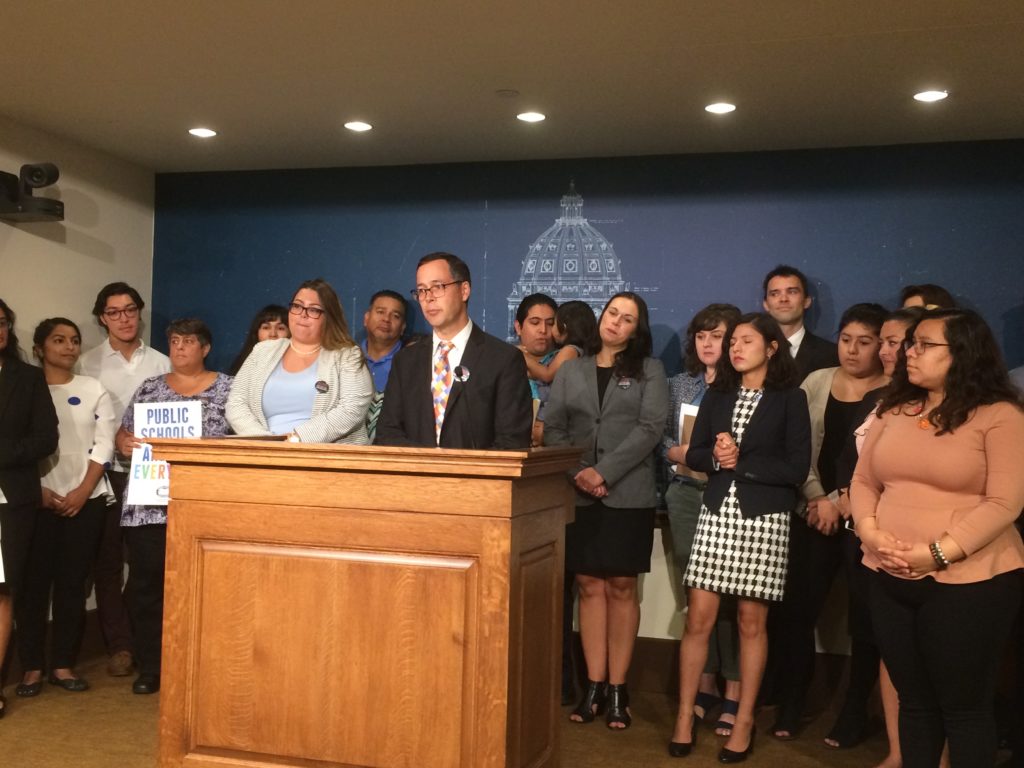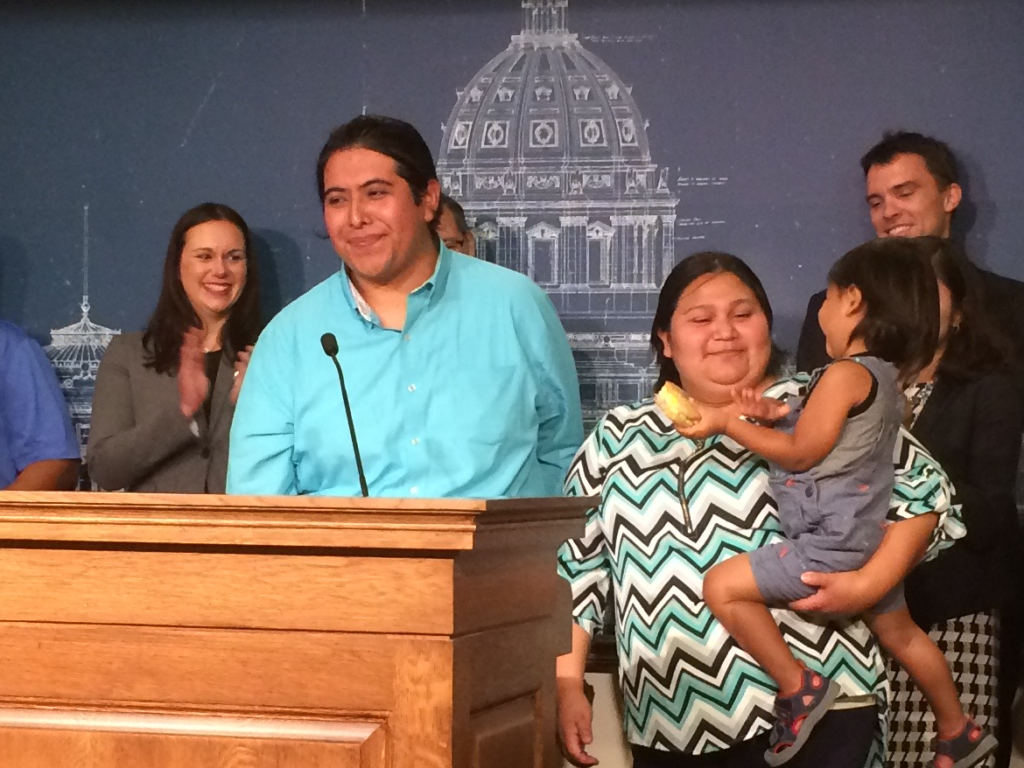News > Immigration In Minnesota
Defending the Dreamers: Looking to DACA and the future
Posted on Aug 15 2017

Five years ago, John Keller recalled, people started lining up at Green High School in Minneapolis at 10 p.m. on the night before the first DACA information meeting. Some 700 people packed the meeting the next day, as the Immigrant Law Center of Minnesota (ILCM) and Navigate-MN helped them begin the process of applying for DACA – Deferred Action for Childhood Arrivals. Then and now, DACA changes lives, protecting young immigrants from deportation for two years, and giving them work authorization and social security numbers.
ILCM Executive Director John Keller, Navigate-MN Executive Director Emilia Gonzalez Avalos, and Mirella Ceja-Orozco of the American Immigration Lawyers Association Minnesota chapter spoke at a press conference at the Minnesota State Capitol on August 15 to mark the fifth anniversary of DACA, along with DACA supporters and advocates and recipients.
Uriel Rosales-Tlatenchi is one face of DACA. He crossed the border with his parents 18 years ago, when he was only 9 years old. Uriel grew up in Minneapolis, graduated from the University of Minnesota-Twin Cities, and was one of the first DACA applicants in Minnesota. He vividly recalls his continuing fear of deportation.
He became an activist, working as the first executive director of Navigate-MN to advocate for legal status for Dreamers – the young people who grew up in the United States without legal status. In 2012, President Obama instituted DACA, which provides a limited, temporary status with no path to legal permanent residence or citizenship. Only Congress can provide that path.

When Uriel got DACA status, he says, “I was no longer afraid.” He could get a driver’s license, and could work in whatever field he chose. Since then, he has married and has a two-and-a-half year old son. He works, pays taxes, and contributes to the state with his civic involvement.
Across the country, nearly 800,000 young people have gained DACA protection during the past five years. In Minnesota, ILCM has helped more than 3,000 young people through the DACA application process. By the end of March 2017, some 6,255 Minnesotans had gained DACA protection, coming from every congressional district in the state.
Young immigrants, who were brought here by their parents before they turned 16 and were younger than 31 on June 15, 2012, may be eligible for DACA. They also need to meet other qualifications, apply, pay fees, and pass a background check.
Like Uriel, 92 percent of DACA recipients are either employed or enrolled in school and 90 percent have either a drivers license or state ID. Some 54 percent have purchased their first car and 12 percent are first-time home buyers. Six percent have started their own businesses, a rate of entrepreneurship nearly double that of native-born citizens.
DACA authorization is good for two years – then it must be renewed. The program itself also has to be renewed every two years. The next time it’s up for renewal is 2018, and nobody knows what Trump will do. He has threatened to end DACA, promised to protect the young people with DACA status, and generally left everyone uncertain of what to expect. DACA currently faces a legal challenge from Texas and nine other states. Will the Department of Justice defend DACA in court? Again – no one knows what to expect from this administration.
If the president decides to end DACA or if the Texas-led state attack succeeds, almost 800,000 young people will be suddenly deportable. The impact on the national economy would be huge. According to the Cato Institute’s estimate:
“[A] repeal or roll-back of DACA would harm the economy and cost the U.S. government a significant amount of lost tax revenue. We estimate that the fiscal cost of immediately deporting the approximately 750,000 people currently in the DACA program would be over $60 billion to the federal government along with a $280 billion reduction in economic growth over the next decade.”
“The State of Minnesota needs every last immigrant and every last DACA recipient,” said John Keller. He cited studies showing that Minnesota, DACA recipients pay an estimated $15 million in taxes every year, and that ending DACA would reduce Minnesota’s Gross Domestic Product by $367 million per year.
Most Americans support Dreamers. A Morning Consult/Politico poll showed strong support for Dreamers, all along the political spectrum:
“In a Morning Consult survey from late April, almost 4 in 5 (78 percent) registered voters said the Dreamers should be allowed to stay in the country, with more than half (56 percent) expressing support for eventual citizenship….
“There was also broad support in favor of the Dreamers among the voters who helped elect Trump in November: 73 percent of those voters said the Dreamers should be allowed to stay in the country, with almost half (48 percent) of those voters also saying they should have a path to becoming U.S. citizens.”
Protecting DACA is a first step, but Dreamers need permanent status that can come only with passage of the DREAM Act by Congress, establishing a path to permanent legal residence and citizenship.
x x x x




